What are the classic Jungian archetypes?
What are the primary archetypes Jung outlined in his writings?
Did Jung make a list of archetypes?
Are there 12 Jungian archetypes?
We’ll explore all of these questions and much more in this guide.
Let’s dive in …
What are Jungian Archetypes?
Swiss psychiatrist Carl Jung popularized the term archetypes. Archetype comes from the Greek—prime imprinter—meaning the original forms that imprint themselves within the psyche.
Jung originally used the term primordial images before landing on archetypes. He discovered these primordial images from an in-depth study of ancient mythologies, fairy tales, and dreams.
Jung saw archetypes as the fundamental units of the human mind.
In The Structure and Dynamics of the Psyche, Jung explains that archetypes “are the living system of reactions and aptitudes that determine the individual’s life in invisible ways.”1C.G. Jung, The Structure and Dynamics of the Psyche, CW, Vol 8, 1970.
The archetypes are instinctual. Again from Jung:2Ibid.
[The] archetypes are simply the forms which the instincts assume.
For Jung, the archetypes also had a kind of spiritual dimension to them:3From Conversations with C. G. Jung, 1977.
Archetypes are images in the soul that represent the course of one’s life.
Jungian archetypes play a central role in analytic psychology as they represent the dominant patterns of human behavior one seeks to bring to consciousness and integrate.
Carl Jung versus Jungian Archetypes
A distinction needs to be made between what Carl Jung wrote about archetypes and archetypes in general. Why? Because the Internet seems to be confused about this difference.
I see many articles about “12 Jungian archetypes,” which leads the reader to assume that Jung provided 12 archetypes. (I’ll explain where I think this mistake comes from below.)
In his body of work, Jung wrote about numerous archetypes. Later Jungians analyzed many others. But Carl Jung himself, to the best of my knowledge, did not make a list of archetypes.
In fact, Jung specifically said there’s no point in making or memorizing a list of archetypes. He writes in The Archetypes and the Collective Unconscious: 4C.G. Jung, The Collected Works, Vol 9, I, The Archetypes and the Collective Unconscious, 1969, Para 62.
It is no use at all to learn a list of archetypes by heart. Archetypes are complexes of experiences that come upon us like fate, and their effects are felt in our most personal life.
So to be clear, there is no definitive list of Jungian archetypes. Technically speaking, every word in the dictionary represents an archetypal form.
Archetypes, Complexes, and the Collective Unconscious
Instead of being personal and relating to the individual’s life experiences, the archetypes are impersonal.
According to Jung’s model, the psyche has personal qualities called complexes and impersonal elements called archetypes.
The individual’s complexes reside in their personal unconscious (derived from past experiences).
The archetypes, however, reside in what Jung called the collective unconscious.
Jung explains:5C.G. Jung, The Collected Works, Vol 9, I, The Archetypes of the Collective Unconscious, 1969.
The contents of the collective unconscious are archetypes, primordial images that reflect basic patterns that are common to us all, and which have existed universally since the dawn of time.
From a Jungian perspective, the archetypes are universal, impersonal, and formless. They transcend culture and geography, although they express themselves in many forms within a particular culture or period.
A List of Classic Jungian Archetypes
Now, let’s review the most common archetypes in Jungian literature—especially in Jung’s work.
Classic Jungian archetypes include:
- The Mother
- The Father
- The Child
- The Persona
- The Shadow
- The Anima
- The Animus
- The Self
- The Hero
- The Maiden
- The Wise Old Man
- The Trickster
- Birth
- Marriage
- Death
Let’s examine each Jungian archetype more closely.
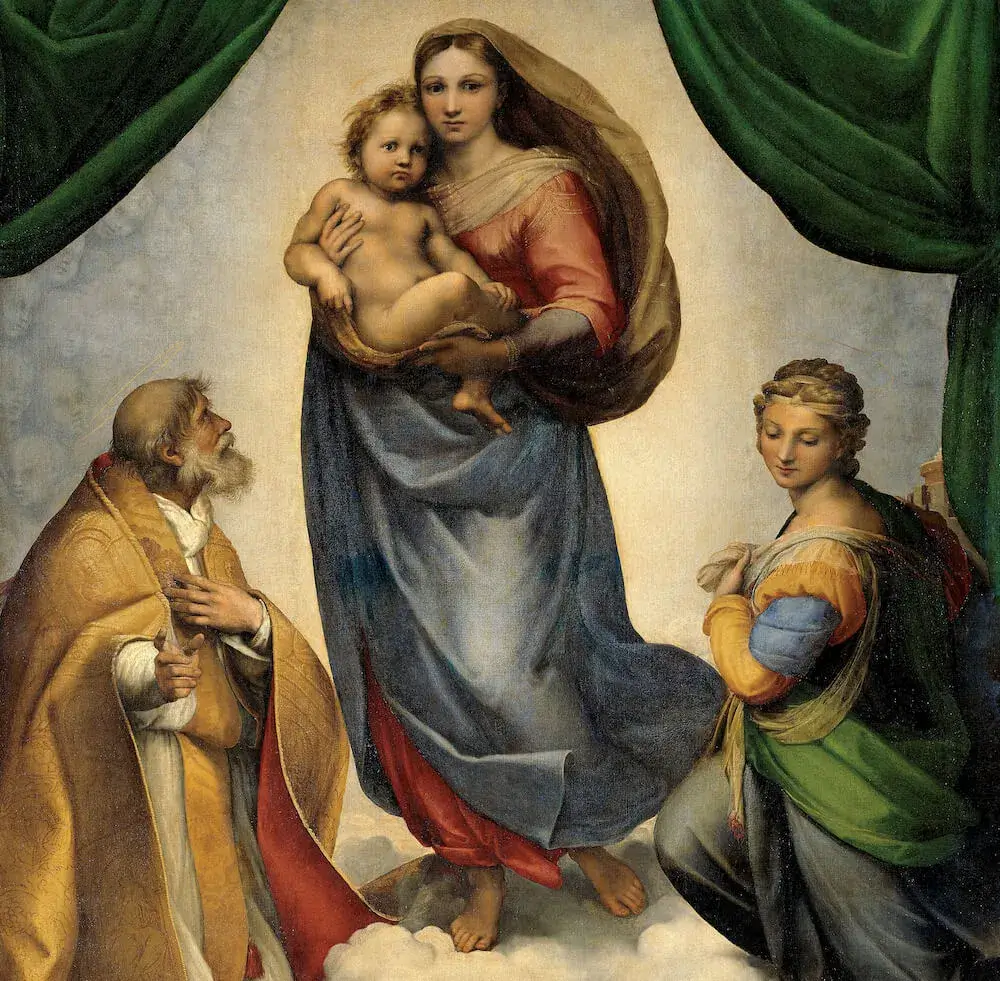
Raphael’s The Sistine Madonna (1512)
The Mother Archetype
We start with the mother archetype. The Mother (and mother complex) is arguably the most often addressed archetypal pattern in Jungian literature—and for good reason. It is via this powerful archetype that human life comes into being.
This archetype can manifest in many other archetypal forms including goddess, demon, witch, dragon, vessel, the abyss, tree, garden, fertility, a deep well, an egg, or a womb. Jung explains that the Great Mother image found in religion is also a derivative of the mother archetype.
Jungian writer Robert A. Johnson explains:6Johnson, The Fisher King & the Handless Maiden, 1993, 61.
The mother archetype is the bounty of nature, which gives us our life and all that we need for that life and which is anyone’s legacy by the fact of being alive. The mother archetype is the art of living peaceably with the bounty of nature, which is pure gift and lies within the ecology of the natural order.
For a dedicated treatment of this classic Jungian archetype see Erich Neumann’s The Great Mother (1955).
The Father Archetype
The masculine counterpart to the Mother is the Father, an equally important archetypal pattern that gets far less attention in Jungian literature. The Father represents the spiritual aspect of Man. The father figure represents intelligence, decisiveness, and wisdom.7“The Phenomenology of the Spirit in Fairytales,” CW 9i, par. 396.
In the son, a positive father complex leads to a reverence for spiritual values. In the daughter, the Father “exerts his influence on the mind or spirit … increasing her intellectuality.”8“The Origin of the Hero,” CW 5, par. 272.
The Child Archetype
The Mother and Father give way to the Child. The child archetype is inextricably linked to both these archetypes, especially the Mother. From Jung’s The Structure and Dynamics of the Psyche:9Collected Works of C. G. Jung, Volume 8.
The mother-child relationship is certainly the deepest and most poignant one we know … (the child) is part of the psychic atmosphere of the mother … everything original in the child is indissolubly blended with the mother-image.
The child archetype has many faces and variations, including what Jung called the Eternal Child, or Puer Aeternus—another classic Jungian archetype.
The Persona Archetype
The persona represents a person’s social mask. It’s a mask we wear when interacting with the world— especially in the earlier stages of life. Persona is singular, but we generally wear numerous masks (personae).
An example of a persona is an executive, a lawyer, a housewife, an achiever, or an athlete. Instead of these representing a role we sometimes play, these personae can become part of our identity—who we think we are. That is, we identify with our persona before starting the individuation process.
The Shadow Archetype
The Shadow represents the first of three archetypes of development in Jung’s work. The Shadow is the “dark side” of our personality; it contains everything we are cut off from. In our early development, many primitive impulses, negative emotions, positive attributes, and power drives tend to get repressed.
Everything we deny in ourselves, for whatever reason, becomes part of our Shadow. Anything opposed to our conscious self-identity gets related to this disowned self. The first part of Jung’s individuation process is to get to know and integrate one’s shadow.
While the shadow is a Jungian archetype in a general sense, a pantheon of archetypal figures exists within one’s shadow.
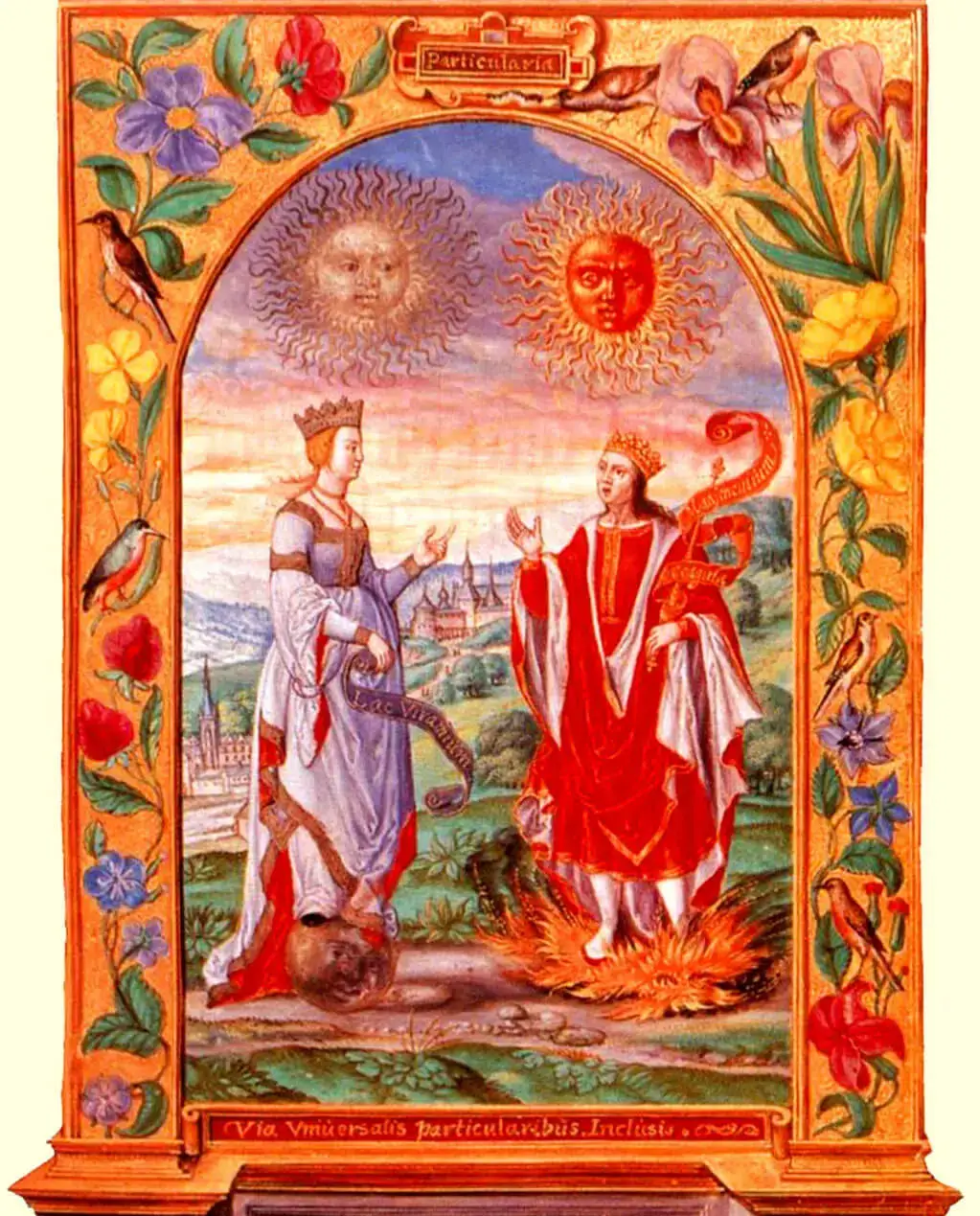
Splendor Solis, Plate 4
The Anima Archetype
In Jung’s work, the Anima often takes center stage. The Anima archetype represents the feminine aspect of a man’s unconscious. Anima is Latin for Soul. At its highest, Jung’s Anima represents a man’s muse, inspiration, connection with higher virtue, and source of meaning. From Jung:10Jung, Conversations with C.G. Jung, 30.
To a man the anima is the Mother of God who gives birth to the Divine Child.
However, the anima is bipolar. A man possessed by his Anima becomes moody, emotional, and unstable. His innate masculinity drops away and he becomes highly irrational. Men possessed by their Anima are wish-washy, dishonest, and irritable. They often act feminine as well.
The Animus Archetype
The Animus archetype is a masculine component of a woman’s unconscious. For a woman, the Animus is the gatekeeper to her spiritual life. The Animus often appears god-like and all-powerful. Jungian Barbara Hannah calls the Animus the “spirit of inner truth in women.”11Barbara Hannah, The Animus, 2011.
A woman possessed by her Animus loses her femininity, her softness. You can not reason with an Animus-possessed woman. She is never content. Jungian Marie-Louise von Franz explains:12Interpretation of Fairy Tales, 55.
The animus contributes to her unrest so that she is never satisfied; one must always do more for an animus-possessed woman.
The Anima-Animus represents the second archetype of development in Jung’s process.
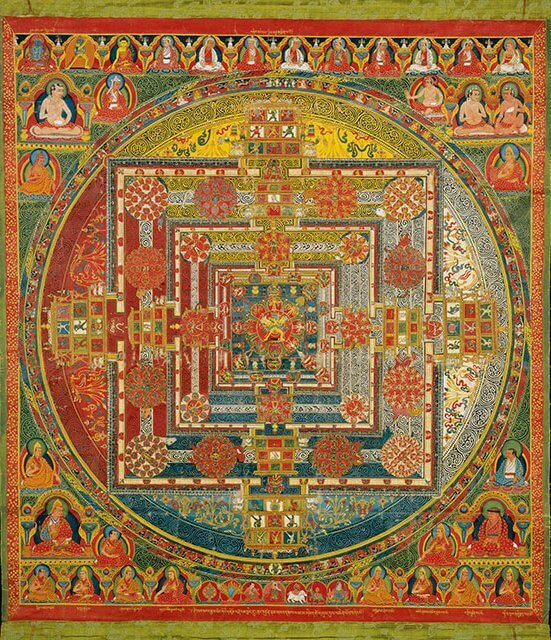
Tibetan Mandala (Symbol of Wholeness in the Psyche)
The Self
The Self is the archetype of wholeness or transcendence. From Jung:13Jung on Ignatius of Loyola’s Spiritual Exercises: Lectures Delivered at ETH Zurich, Volume 7: 1939–1940, 55.
So what is the Self? It is a center or wholeness that consists not only, like consciousness, of the conscious psyche, but of both the conscious and unconscious parts of the psyche together. This Self also comprises what we are but do not know we are.
Jungian psychologist Edward Edinger writes in Ego and Archetype:14Edward F. Edinger. Ego and Archetype (C. G. Jung Foundation Books Series), 1992.
Psychological development in all its phases is a redemptive process. The goal is to redeem by conscious realization, the hidden Self, hidden in unconscious identification with the ego.
The Self, from a Jungian sense, is both personal and impersonal. It includes both the ego and one’s inner divinity. Arriving at the Self represents the final stage of Jung’s individuation process.
The Hero Archetype
Another classic Jungian archetype is the Hero. In storytelling, the hero represents the protagonist or the main character. In psychology, the hero archetype is a universal symbol representing a specific stage of human development. The hero must constellate his energy to overcome obstacles and achieve specific goals.
Jung writes in Archetypes and the Collective Unconscious:15Jung, The Archetypes and The Collective Unconscious (Collected Works of C.G. Jung Vol.9 Part 1), 1981.
The hero’s main feat is to overcome the monster of darkness: it is the long-hoped-for and expected triumph of consciousness over the unconscious.
Psychologically, the hero archetype represents the peak of the adolescent stage of development. The young Hero can develop into mature adulthood by engaging in the hero’s journey.
The Maiden Archetype
The Maiden is the woman. She personifies innocence and softness. The simple Maiden meets a man and gives birth to become Mother. She is the feminine component in a man’s psyche and the inspirer of his life. That is, the Maiden represents the Anima for a man.
For both the masculine and the feminine, the Maiden represents one’s feeling function. Jung and the Jungians go into great detail about the “wounded feeling function” in our society. Robert A. Johnson uses the myth of the Handless Maiden to illustrate how the feminine heals: by being still in the forest.16Robert A. Johnson, The Fisher King and the Handless Maiden. The masculine fights; the feminine reconciles.
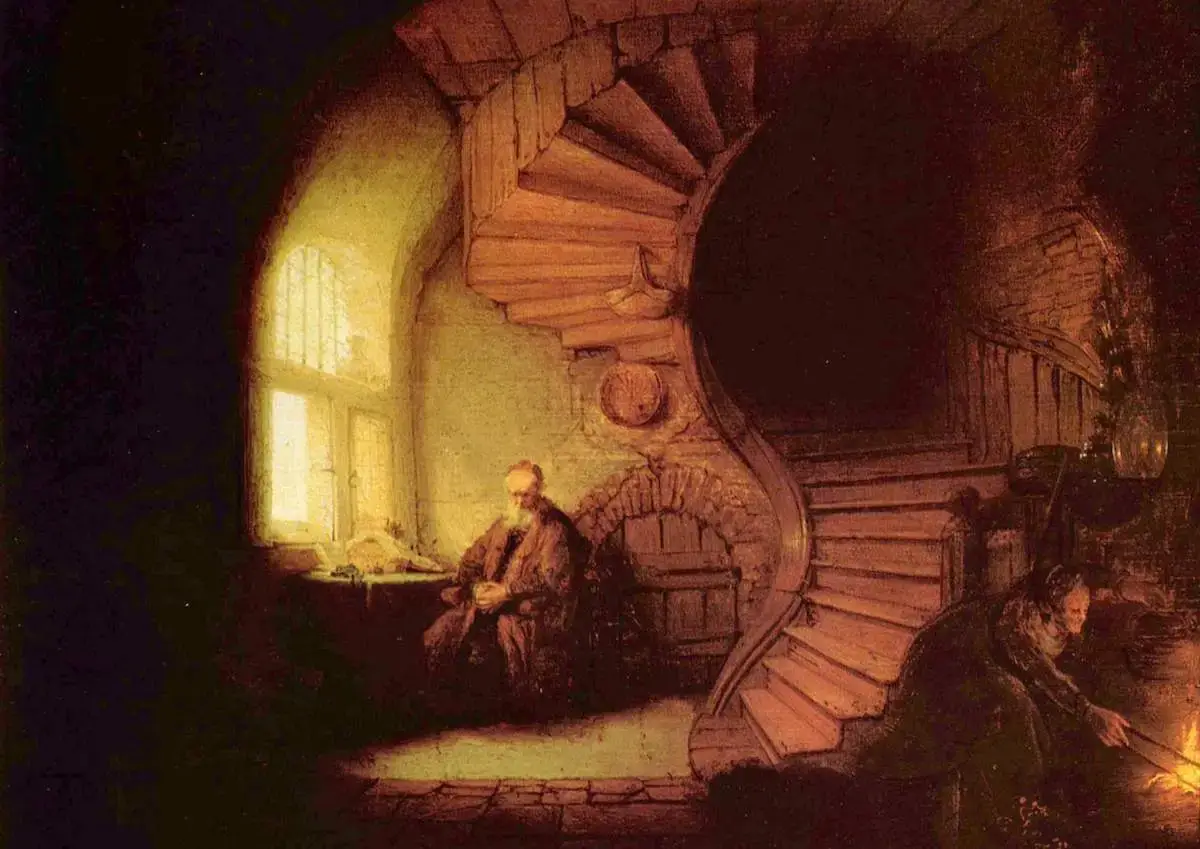
Rembrandt’s Philosopher in meditation
The Wise Old Man Archetype
Jung often referred to the Wise Old Man archetype in his work. For Jung, the Wise Old Man was a common manifestation of the Self in one’s psyche—the inner wisdom hidden within us.
In fact, Jung’s unconscious personified this archetype in a character in his dreams and active imagination called Philemon.17See Jung’s The Red Book and Dreams, Memories, Reflections. Philemon helped guide Jung on numerous adventures and to many powerful insights he later shared in his writings.
The role of this Wise Old Man archetype is to guide the individual toward wholeness. The Sage is another expression of this classic Jungian archetype.
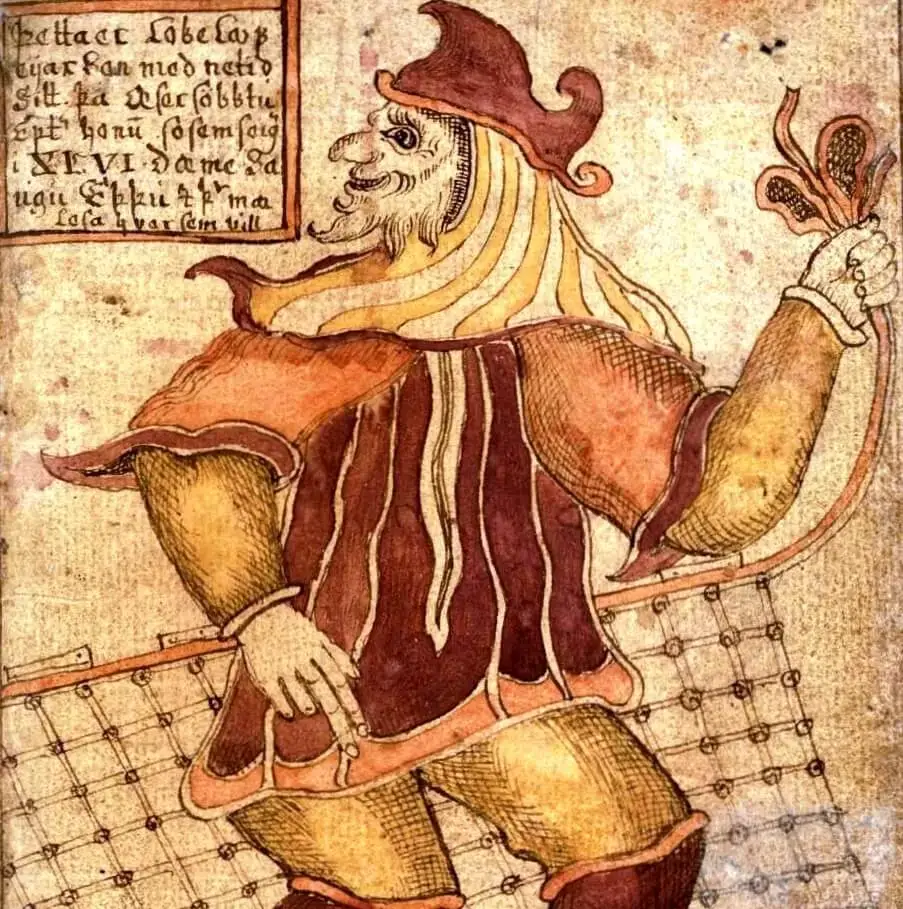
Norse Mythology Image of Loki from SÁM 66 (18th Century)
The Trickster Archetype
The trickster is another universal archetypal pattern found throughout antiquity in myths and legends. The Trickster is a complex character with many contradictory dimensions. Jung writes in “On the Psychology of the Trickster-Figure,”18Jung, CW 9i, par. 472.
He is a forerunner of the saviour, and, like him, God, man, and animal at once. He is both subhuman and superhuman, a bestial and divine being, whose chief and most alarming characteristic is his unconsciousness.
The Trickster archetype is sometimes referred to as a puppetmaster or a manipulator. Loki is a popular trickster god in Norse mythology. When someone says “fate is playing a trick on him” they are eluding to this trickster archetype.
Common Motifs as Jungian Archetypes
Many people mistakenly think that characters are Jungian archetypes. For example, one may assume that Loki is the Trickster. Remember that archetypes are formless and impersonal.
So while a character can personify archetypal qualities, the character itself is not the archetype. Additionally, characters are not the only expression of archetypal energy.
In Jung’s work, common motifs like birth, marriage, and death are also considered archetypes. Any kind of initiation ritual is archetypal too. Many Jungians have analyzed various creation myths—how the universe came into being—to understand the psyche better.
Neo-Jungian Archetypes
Above, I attempted to highlight the most common archetypes found in Jung’s work. However, there are more modern interpretations of Jungian archetypes, sometimes called “neo-Jungian.”
For example, I frequently reference neo-Jungian Robert Moore’s model of the psyche on this website because I think it’s incredibly instructive and useful for anyone doing shadow work.
Moore’s model highlights four major archetypes in the psyche of both men and women.
- The King/Queen Archetype
- The Warrior Archetype
- The Magician Archetype
- The Lover Archetype
Let’s briefly look at these neo-Jungian archetypes featured in Moore and Gillette’s King Warrior Magician Lover.
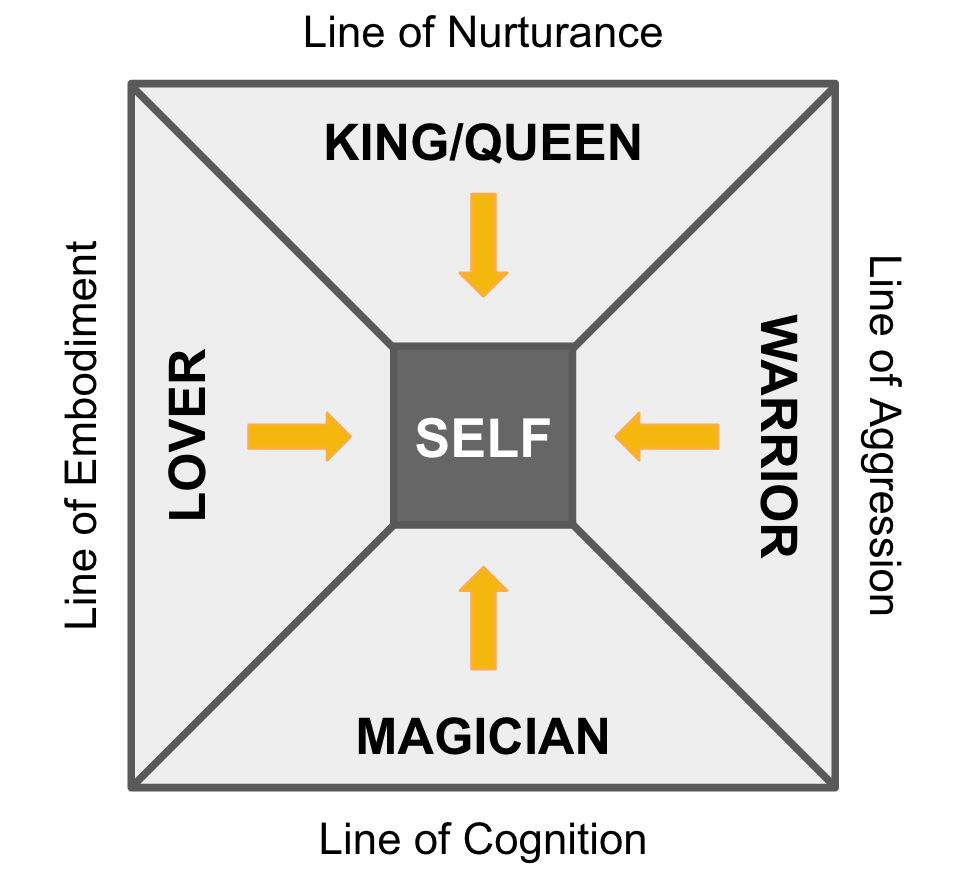
Neo-Jungian Robert Moore’s Structure of the Self
The King (or the Queen)
The King archetype signifies the primordial man, the “Image of God,” the Atman. This powerful archetype represents the organizing principle within the man or woman’s psyche. For instance, a stable, grounded man is in contact with this archetypal king energy.
Another function of the King archetype is to provide fertility and blessing. When the King and Queen are present, the land is fertile and the people are at peace and prosperous. In the absence of the King and Queen, the land becomes barren and the people suffer greatly.
(Note: Moore’s work focused on masculine psychology, but his model also extends to the feminine. The Queen is just as essential as the King. They are both nurturing, organizing, and centering within the personality.19https://robertmoore-phd.com/index.cfm?fuseaction=page.display&page_id=32)
The Warrior
The Warrior archetype represents the aggressive and energetic aspect of one’s psyche. The Warrior in his fullness is like a Taoist living the Way or a samurai living by its code. The Warrior pushes us to embrace life’s challenges and harness one’s life force energy.
In both men and women, the Warrior represents the capacity for aggression, but not in a destructive way. Instead, its function is to serve a cause or mission. Warrior energy enables us to get motivated, access focused discipline, establish boundaries, and follow through.
Men tend to access this warrior energy earlier in life while women pass through this line of aggression in mid-life (where men become more passive).20David Gutmann, Reclaimed Powers: Men and Women in Later Life, 1994.
The Magician
The Magician is the archetype of cognition. With Magician energy, we move from information and knowledge to deeper wisdom for healing ourselves and others. The Magician is the builder of our world.
The Magician carries hidden knowledge that comes through special training. Its role is to contain and channel its power for the good of all. This means becoming generative as one matures in their development.21As depicted in Erik Erikson’s “Generativity vs stagnation” in his psychosocial developmental model.
The Magician is a derivative of the Jungian archetype, the Wise Old Man, highlighted above.
The Lover
The Lover is the archetype of play, embodiment, intimacy, joy, and affiliation. This archetype is instinctual, sensual, and sensitive to the physical world. Without a healthy connection to the Lover archetype, one experiences life as flat, dull, and meaningless.
With the Lover archetype, one can dance with life. From a classical Jungian sense, the Lover represents one’s feeling function (also associated with the Maiden and Anima archetypes). Repressed emotions like grief, joy, and rage often block access to this archetypal energy.
The Self
The four archetypes above converge in the center at what Moore calls the Cohesive Self. This Jungian archetype of the Self represents humankind at its fullest.
Biopolar Shadow Archetypes

The Archetypes of the Immature and Mature Masculine from King Warrior Magician Lover
What I find most revealing and useful about this neo-Jungian archetypal model is that it acknowledges that each archetype has a bipolar shadow component.
That is, when these archetypes are not in healthy alignment they fall into destructive patterns. These patterns are either active or passive. For example, in the case of the King archetype, the active shadow is the Tyrant while the passive shadow is the Weakling.
I will cover these bipolar archetypes in a future guide, however, as an illustration, see my guide on the Magician and its bipolar shadow.
The Myth of 12 Jungian Archetypes
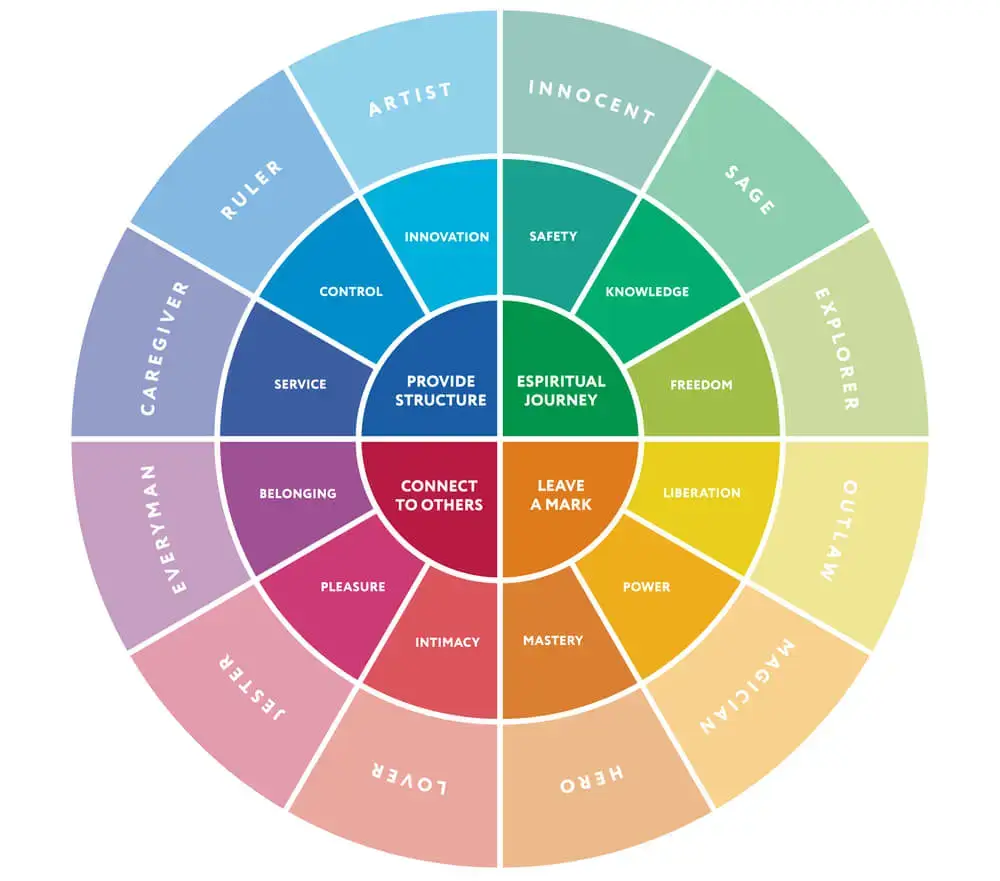
12 Archetypes Model from Carol Pearson
Now I’d like to point out a confusion I’ve observed online. I’ve noticed “lists of 12 Jungian archetypes” all over the internet. Virtually in every instance, they display the same 12 archetypes:
| The Innocent | The Lover |
| The Orphan | The Creator |
| The Hero | The Jester |
| The Caregiver | The Sage |
| The Explorer | The Magician |
| The Rebel | The Ruler |
To be clear, this is NOT a list of archetypes from Jung or any Jungian writer (that I’m aware of). As stated above, Jung didn’t create a list of archetypes nor advocate doing so.
The “12 Archetypes” is a model from Carol Pearson’s Awakening the Heroes Within (1991). Her 12 archetypes model—called the PMAI instrument—was later popularized in books like The Hero and the Outlaw (2001) by Margaret Mark and Carol Pearson.
While Pearson’s work may be based on Jung’s insights, these specific 12 archetypes are not singled out in Jung’s work. The classic “Jungian archetypes” are the ones I highlighted above.
Jungian Archetype FAQ
Let’s explore a few common questions related to Jungian archetypes:
“What’s my Archetype?”
From my perspective, although numerous “archetype quizzes” and assessments are available online, this question and these assessments misunderstand the nature of archetypes.
One’s psyche is a composite of many different archetypes. In fact, different archetypes, parts, or subpersonalities are shifting within your psyche multiple times a day. Changing your clothes can trigger a different archetype. The music you listen to and the media you watch also trigger numerous archetypal patterns.
In my experience, pigeonholing yourself with one or a few archetypes isn’t practical or effective. If anything, it’s more likely to create unnecessary ego inflation. Instead, observe your habitual patterns—thoughts, feelings, attitudes, impulses, and judgments.
It is, however, useful to familiarize yourself with various archetypal patterns to increase your consciousness when you notice yourself possessed by one of them.
“How Do I Work With Archetypes?”
From a purely Jungian sense, you interact with the archetypes via a process of inner dialogue Jung called active imagination.
But in modern times, “working with archetypes” seems to have taken a New-Age tone. In the New Age, archetypes are elevated and made into decks of cards. People mistakenly try to “embody” specific archetypes (like the “goddess”).
From my understanding, this is an error. We are already a collection of archetypes. Our personalities and interactions with the world are mostly unconscious and therefore archetypal.
The goal of inner work is NOT to embody the archetypes. Instead, it’s to bring these Jungian archetypes to consciousness so we can differentiate from them. The goal is to become more human—not more archetypal.
What are Personality Archetypes?
I don’t know where the term “personality archetypes” comes from, but I’m pretty sure it wasn’t Jung. Any archetype can (and does) influence your personality.
That said, virtually all personality models including the Enneagram, Myers-Briggs, or Human Design Engineering assess a series of personality archetypes.
For example, the 9 types in the Enneagram are, in essence, 9 different personality archetypes.
Type 1: Reformer / Perfectionist
Type 2: Helper / Giver
Type 3: Achiever / Performer
Type 4: Individualist / Romantic
Type 5: Investigator / Observer
Type 6: Loyalist / Loyal Skeptic
Type 7: Enthusiast / Epicure
Type 8: Challenger / Protector
Type 9: Peacemaker / Mediator
Similarly, all the combinations of Jung’s Psychological Types used in Myers-Briggs can also be considered personality archetypes.
But as stated above, it’s an error to identify with a particular personality archetype. (For this reason, Jung dismissed the Myers-Briggs personality model as missing the point.)
What are Character Archetypes?
Presumably, character archetypes are common characters found in story structure. All of the Jungian archetypes listed above are common patterns found in storytelling.
A classic example of a character archetype is the Hero. Another example would be Jung’s Wise Old Man or what mythologist Joseph Campbell called the Mentor (with supernatural aid).
Here’s a list of common character archetypes:
- The hero (protagonist)
- The villain (antagonist)
- The wise old man (mentor or sage)
- The trickster (manipulator)
- The princess (anima)
- Allies (friends)
- Magical animal (guide)
There are also many derivates of these character archetypes. For example, I outline 11 variations of the hero archetype in this guide.
Books Related to Jungian Archetypes
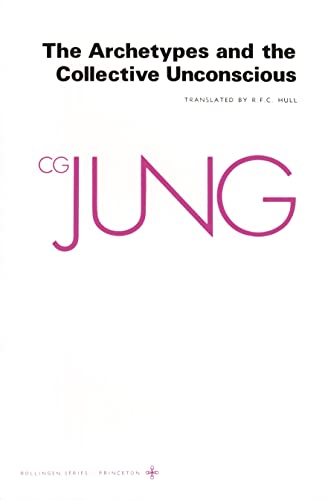
The Archetypes and the Collective Unconscious
by Carl Jung
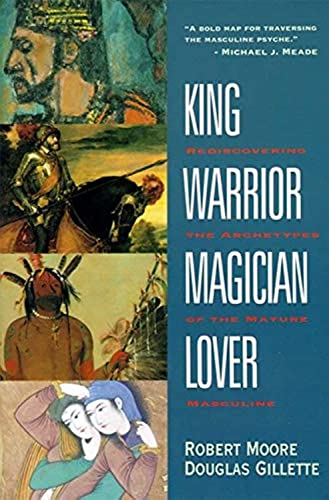
King Warrior Magician Lover
by Robert Moore and Douglas Gillette
